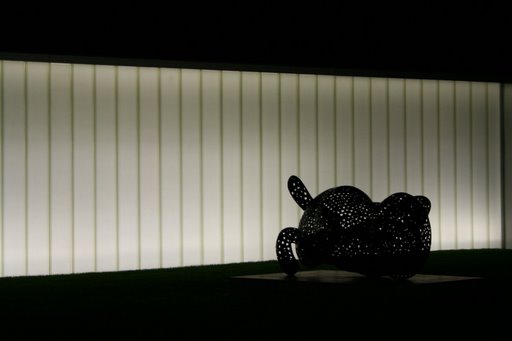In the last couple of months, at least, if not longer, it seems reporter/interviewer and "man about town" Steve Kraske, of the Kansas City Star and KCUR 89.3 FM radio, has posted and posed more good questions and issues and history of our area than just about anyone.
I think what really first turned my head, so to speak, in his reporting, was when he brought up the issue of whether or not the name of our one very prominent fountain in town, on the Country Club Plaza, the JC Nichols fountain, should keep its name or not, given Mr. Nichols deepset, historical, proven, public racism.
The fact is, it's Mr. Nichols racism that was a huge factor in making us the very divided, very segregated city and metropolitan area that we still are, today. That impacted where people live, where they work, where they go to school and so, obviously, the education they get, the jobs that are possible and finally, how much they earn. Those are huge, huge ramifications and they've reverberated through people's lives and so, through the city, and for decades. It's what has made what and who we are today, personally and as a city and metropolitan area. We know it goes all the way out, across the state line, ito Kansas.
Then, he didn't just ask it once but twice in the Star:
With Yael Abouhalkah off the staff of our local paper, who else is covering the State of Kansas fiscal debacle like this?
Not to be done there, this week, just a couple days ago, he had this one in the Star:
He proposed we should maybe, as a city or state, or both, at least, put up a monument---or two? more?--to the Americans who helped build our nation, innocent Americans, but who were lynched by fellow Americans.
Then, on KCUR, the local NPR station, he followed up that article with this interview and topic:
He has singlehandedly done some pretty fantastic writing and interviews and is touching on stories that need to be covered no one else is, I think. He's really having us and helping us examine our history and by doing so, showing us where we are today.
With these examples alone, I can't think of one other person in the metropolitan area, or the region or state, for that matter, that is posing such provocative issues and questions for all the rest of us.
So kudos, Mr. Kraske. Good on you. Thank you, deeply and sincerely, for getting and keeping the rest of us out here thinking and questioning what we might otherwise not question or think about. And please, do keep up this good and even important work. The only other challenges we seem to get are from the Right Wing and Republicans who seem to want us to be or get or remain selfish and stingy and even racist, lately.
To other reporters and writers and people in the media, you would do well to copy this example.
Please.
Now if only he could get KCPT to include minorities, "people of color" on their "Ruckus" and weekly news programs. And every week, at that. Seems they don't think, down there at our local PBS station, that black and Hispanic people live here or that they have anything to contribute to our city and any possible solutions to issues and problems of the day.
Here's hoping.
The Kansas City Star, KCUR and we all are lucky, very lucky to have him in our midst and reporting and interviewing.
So again, Mr. Kraske. Thank you sincerely. Please don't stop now.
Links:

















